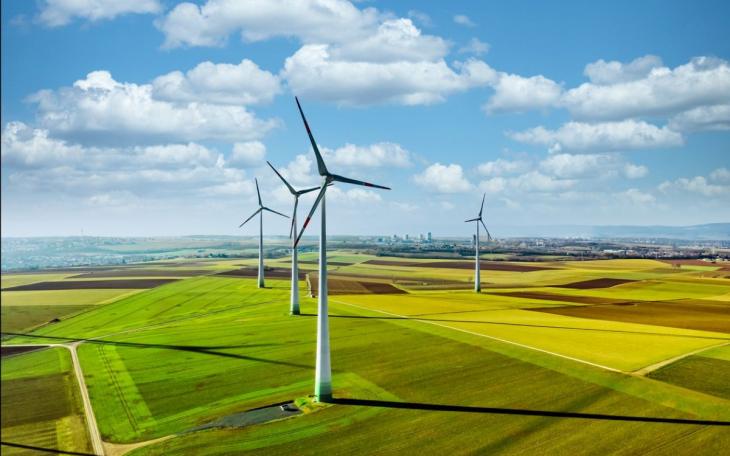A flutter on the breeze or a safe bet with onshore wind?

The onshore wind sector in the UK has been dealt a mixed hand by successive political decision makers in recent years. However, last week in Edinburgh, two Scottish Government Ministers doubled down on wind and pulled an ace out of the pack, giving the sector the most significant boost in some time, committing to double the scale of the sector in the next 7 years. The Onshore Wind Sector Deal was signed at the Onshore Wind Conference 2023 by Neil Gray MSP, the Cabinet Secretary for Wellbeing Economy, Fair Work and Energy and Gillian Martin MSP, Minister for Energy and the Environment.
Is this just another empty political promise? Possibly, but this document has been created in partnership with the wind energy sector. It goes beyond mere rhetoric and instead sets out clear commitments that will deliver 20GW of onshore wind capacity in Scotland by 2030. The commitments indicate specific actions to be undertaken by the sector, the government, or through cooperative efforts. They are arranged across six themes: Supply Chain, Skills & Circular Economy; Community; Land Use and Environment; Planning; Legislative and Regulatory; Technical.
Representing the sector at the signing were Claire Mack, the CEO of Scottish Renewables and Barry Carruthers, the MD of Onshore at Scottish Power and Chair of the G12 Onshore Wind Sector Working Group. Their involvement underlined that this document was a genuine collaboration between government and industry, and many long hours had been invested from both sides to make it meaningful.
Amongst the lengthy list of commitments are some very clear ones around the planning process. This includes speeding up the Section 36 decision-making process to 12 months where there is no public inquiry or 24 months if there is a public inquiry. The target is for the Scottish Government to deliver these improvements by 2025 and statutory consultees will be advised of the new ambitions before the end of this year. By the middle of 2024, a more efficient process for the discharge of pre-commencement planning conditions will aspire to discharge the majority of construction-ready projects within six weeks.
From industry, there is a commitment to provide before the end of this year, a full analysis of expected projects and extensions over the next seven years, and this would be updated on a bi-annual basis to allow the Government an insight to forward plan resources. There is also a cumulative commitment to ensure cooperation on areas such as noise, construction, biodiversity and community benefits where developments are located close to each other.
The relationship with local communities is a critical element of the planning process for onshore wind projects. The Deal aims to build upon past achievements by emphasizing the benefits of proactive pre-planning community and stakeholder engagement, promoting a collaborative approach to coordinating community benefit funds, and providing increased support for initiatives that contribute to the goal of achieving net-zero emissions. These initiatives may include installing solar panels, implementing low-carbon heating systems in local homes, and expanding electric vehicle charging infrastructure.
While community benefits can often be viewed a minor element, between 2018 and 2022, over £106 million of community benefits were committed from onshore windfarms in Scotland – by doubling the scale of that generation, there is a sense for the value that this sector can bring to local communities.
It is easy throw around gigawatts, megawatts, and terawatts but what does this all mean in practice. There are lots of variables to consider, but in simple terms, 20 GW of capacity is enough to power about 15 million homes, or enough for the whole of Scotland five or six times over. Onshore wind has staked its claim as one of the most significant UK energy sources and is generally now the second largest contributor to our energy – providing 23.5% of all electricity used last month.
What does 20GW look like in terms of turbines? There is currently 9.35GW of installed capacity in Scotland which is currently around 19,000 turbines – critics have been quick to condemn the move and suggest that this will mean another 19,000 turbines in Scotland. However, efficiency has changed, and larger turbines can generate much more electricity than the older models. The Deal itself talks of turbines with tip heights above 200 metres that can each generate over 6MW – on this basis, rather than another 19,000 turbines, the commitment could be delivered with just 10% of that number of turbines. In reality, height expectations from varying locations will see a number in the middle, while some of the older turbines will be repowered with more modern and efficient replacements.
The developers in the onshore wind sector have overseen the maturity of a technology that works, that is sustainable and is one of the cheapest forms of electricity generation. Additionally, the sector has adopted a trust-based approach to working with communities that has established a thorough process of implementing genuine community commitments around ownership and benefits. Add to this that the UK is the windiest country in Europe, home to about 40% of the winds that blow across the continent, and a commitment to this sector seems less of a gamble and more of a sure bet.
In the casino of modern politics, energy is the high stakes table – net zero, affordability, generation independence, grid infrastructure, planning, smart connectivity – are all up for grabs. Last week, the Scottish Government handed the onshore wind sector a winning hand but focus now shifts to Westminster to see if the other dealers in the house can turn a good hand into a full house for the industry.
The SEC Newgate team works across all energy technologies, including experience on over 50 onshore wind projects, in all four corners of the UK. Our work includes community engagement, communications, public consultation and the facilitation of community liaison groups and community benefit fund discussions. We advise on local planning projects and both Section 36 and NSIP level projects. If you would like to discuss how we can assist you in unlocking future sites, please get in touch.









